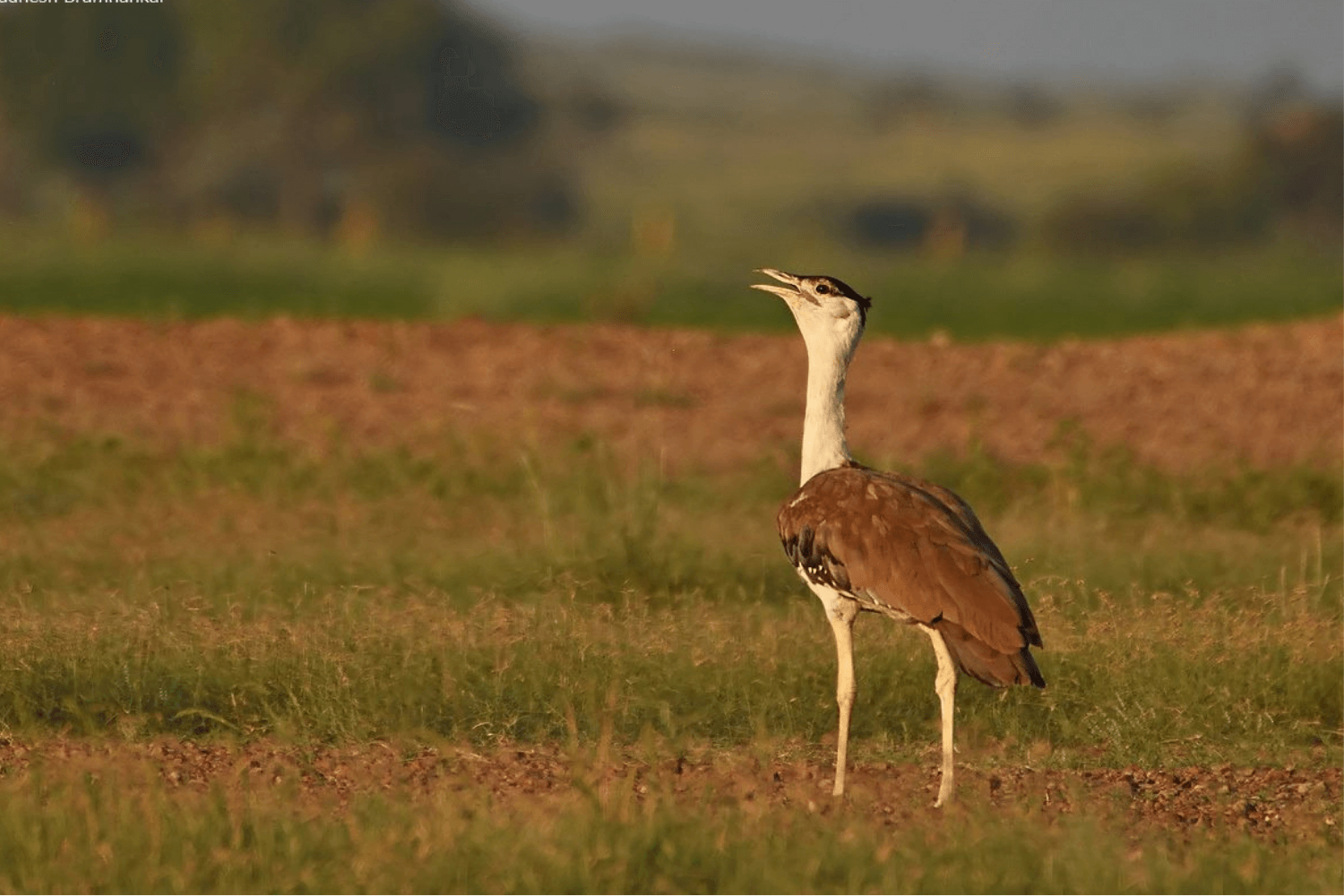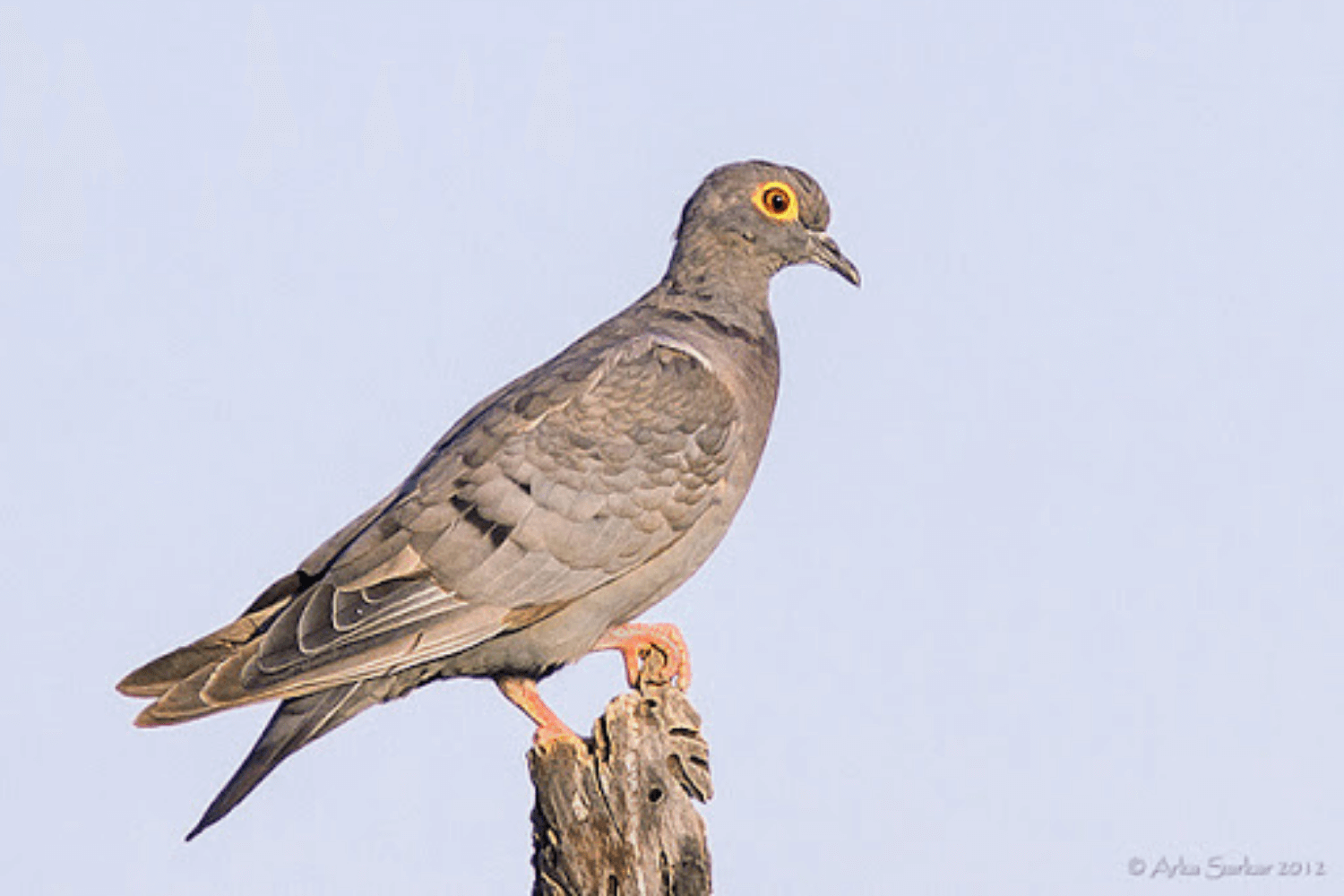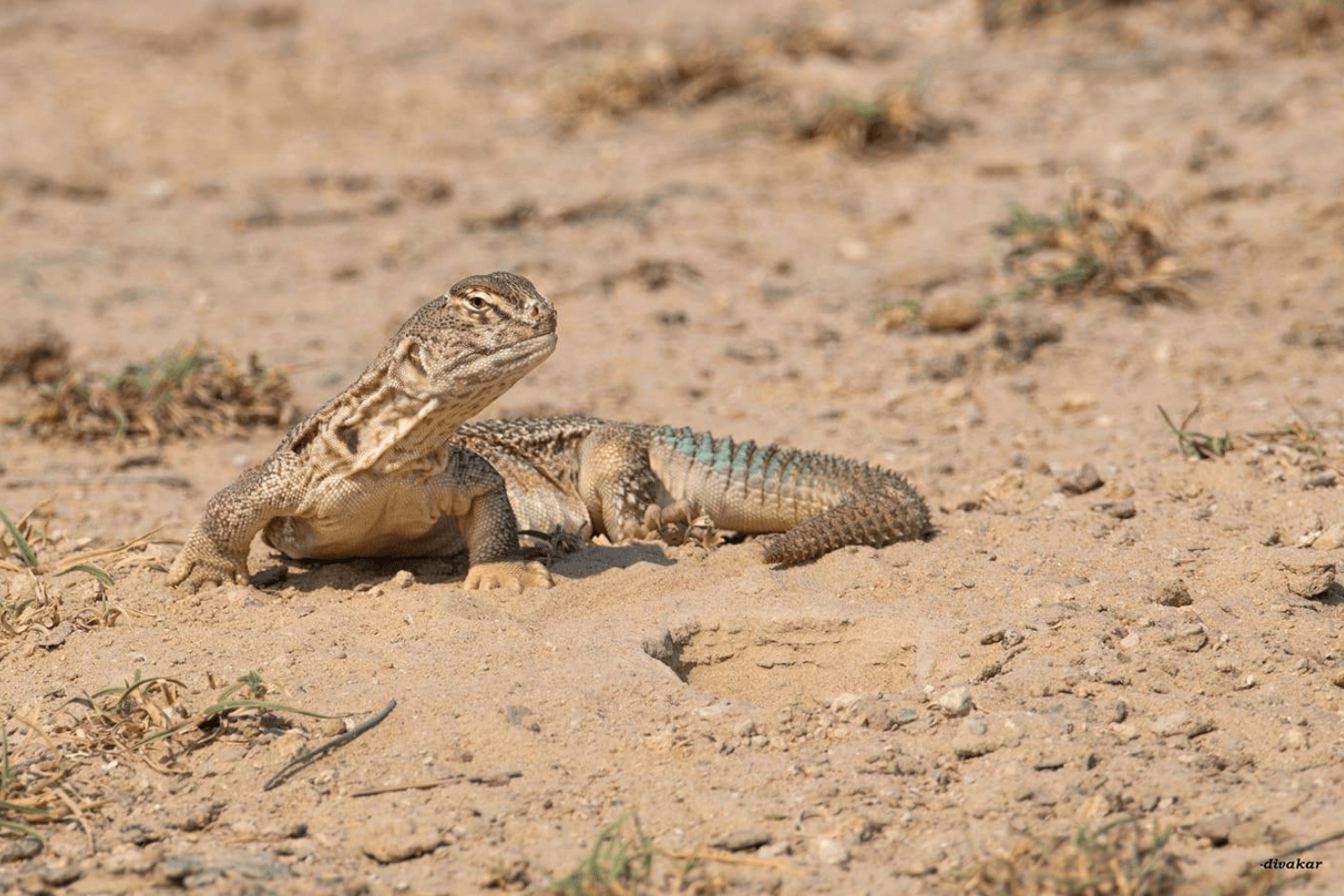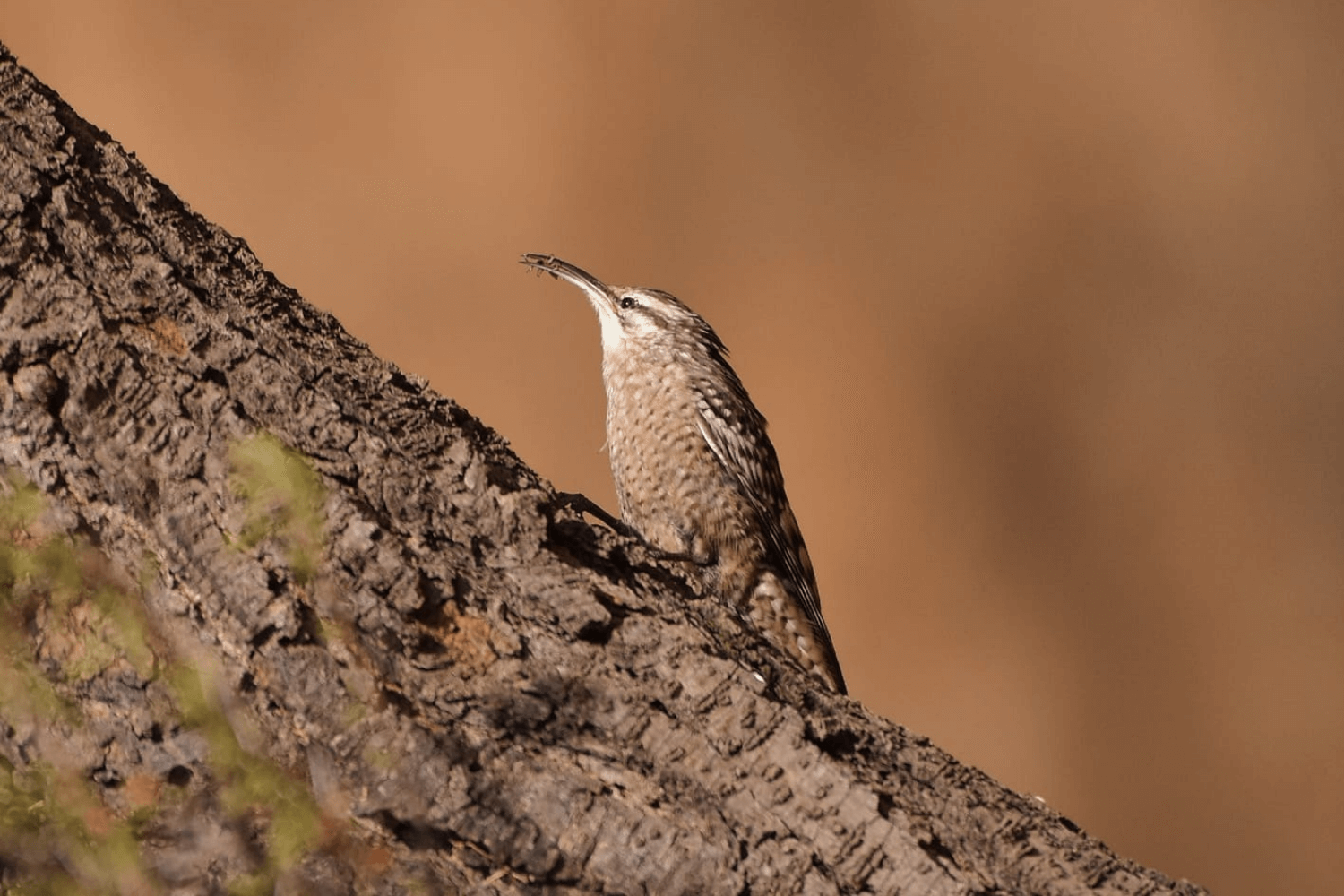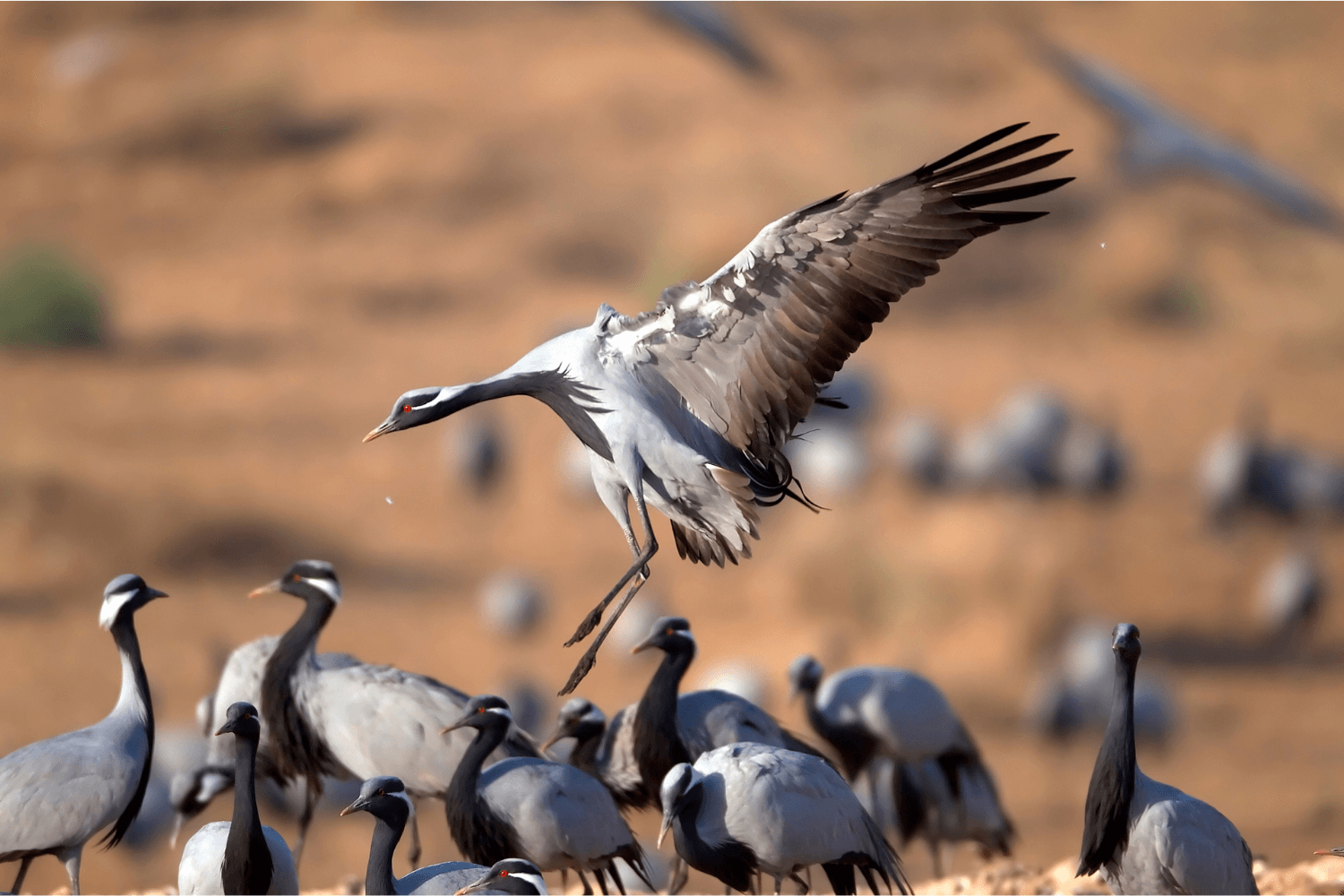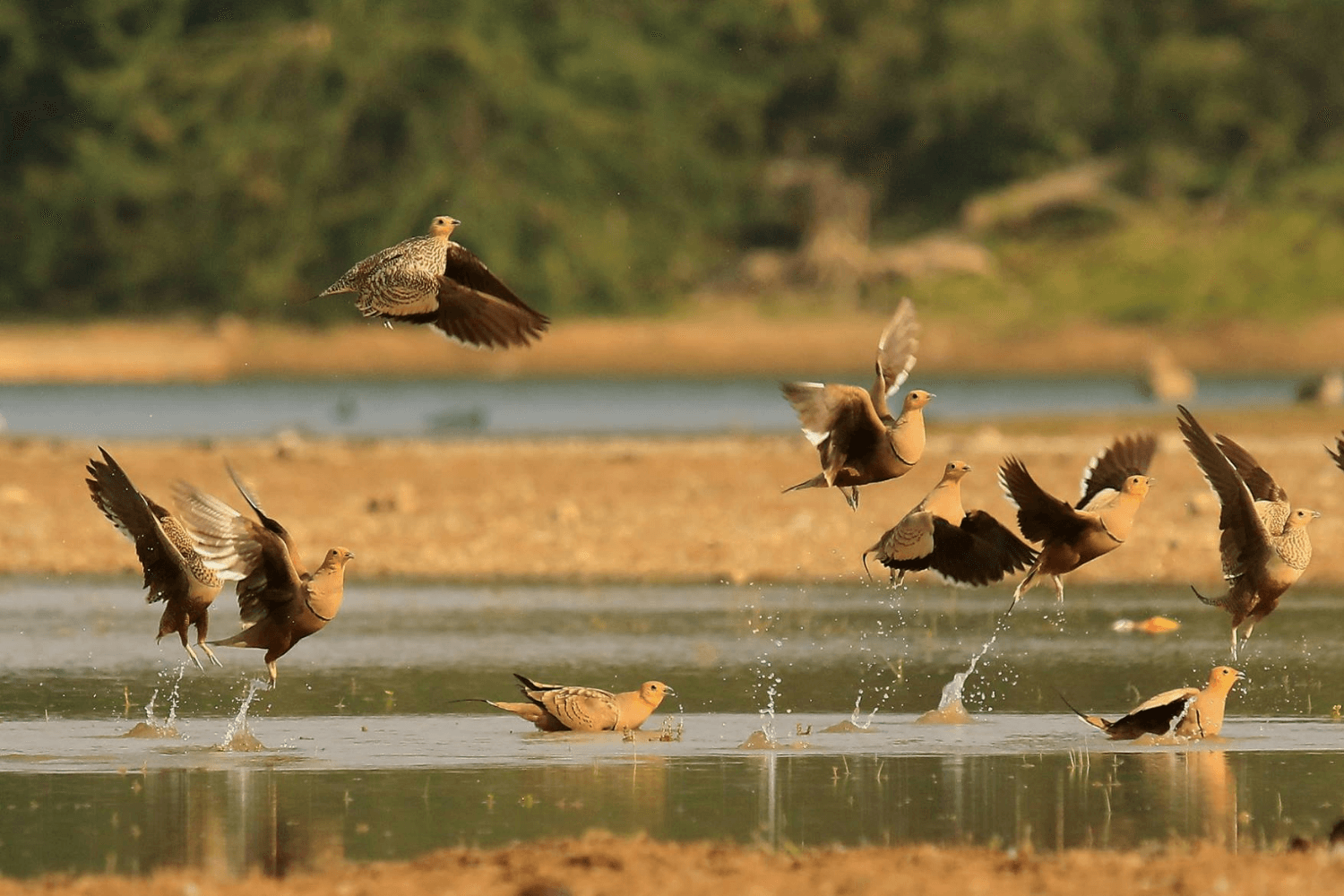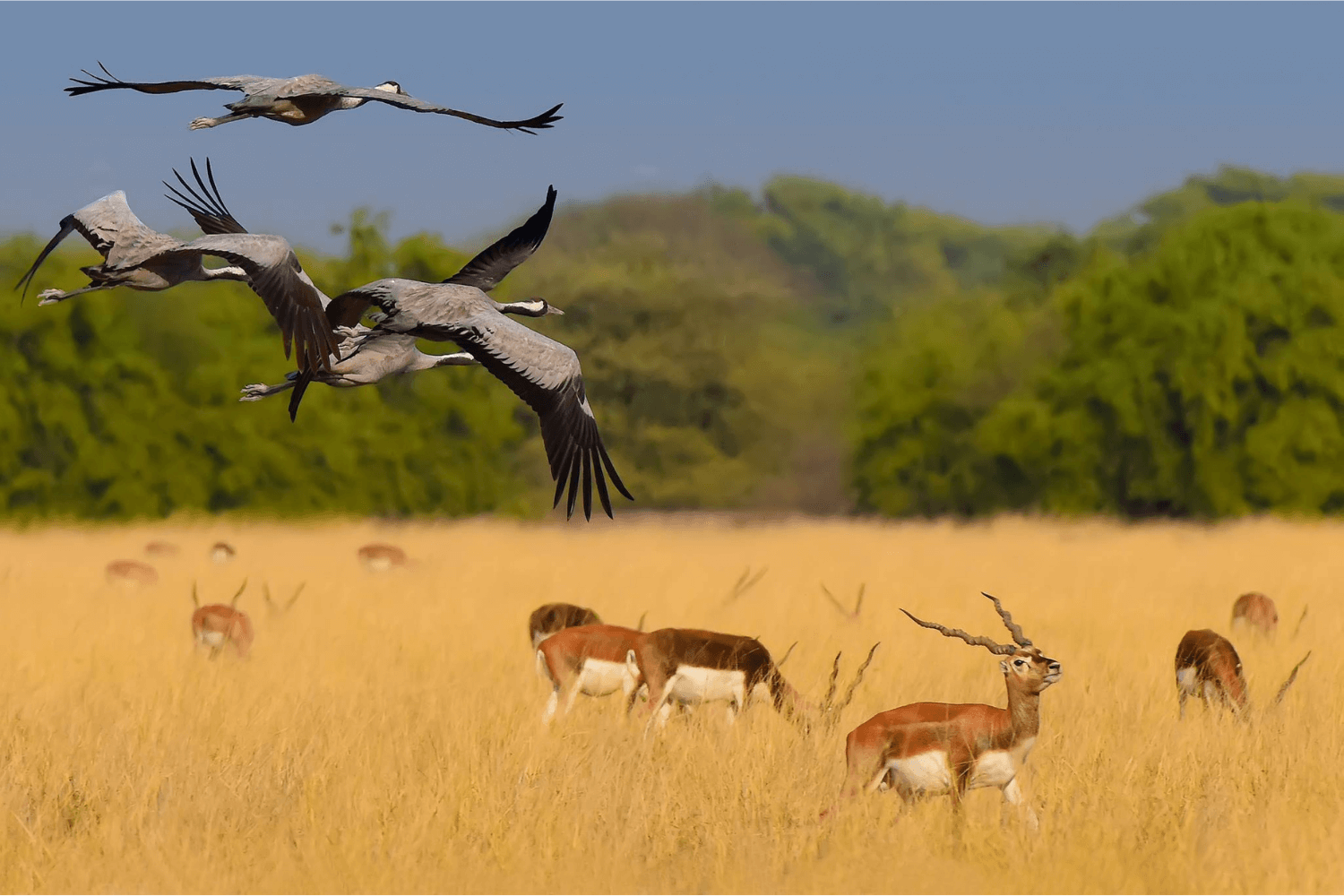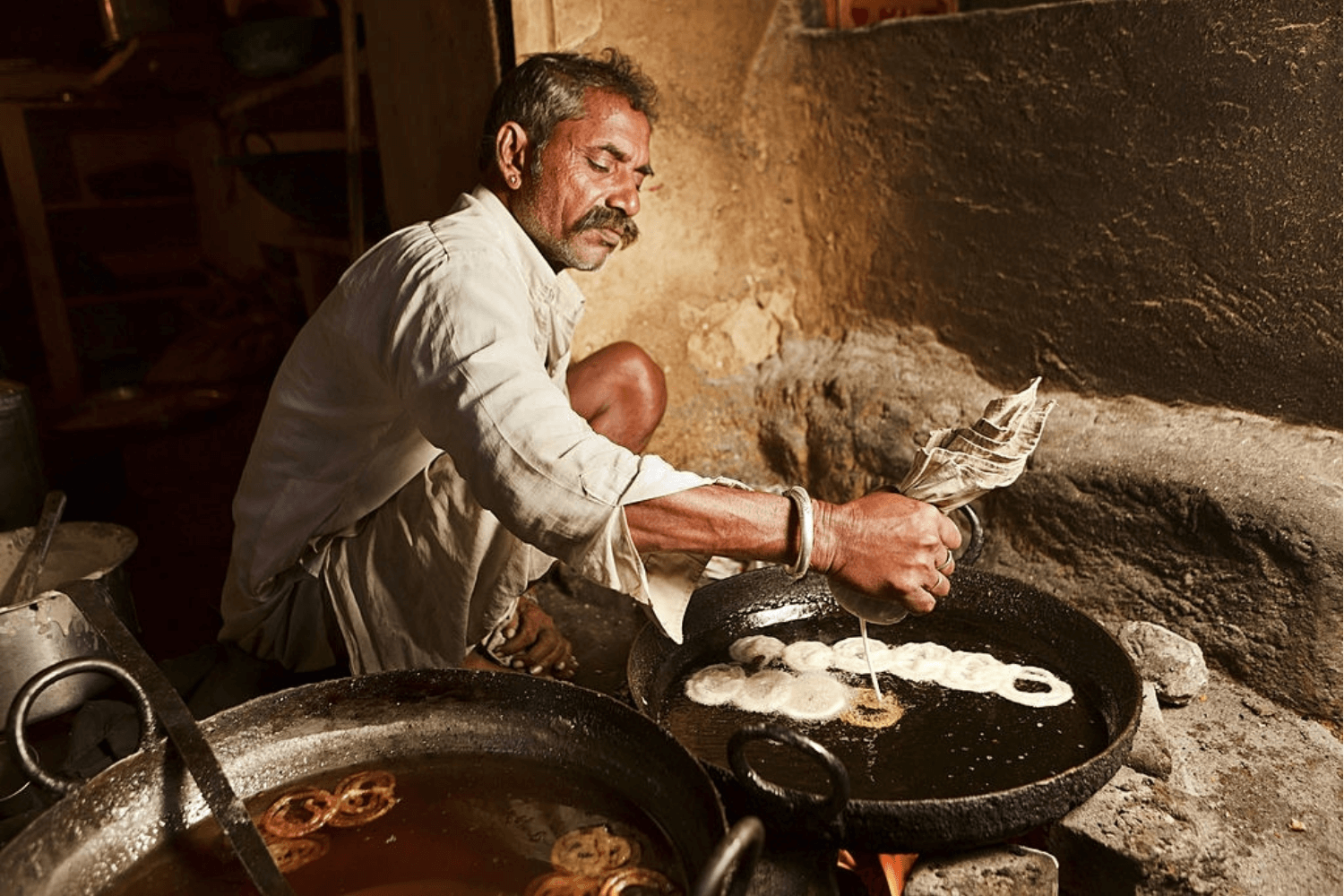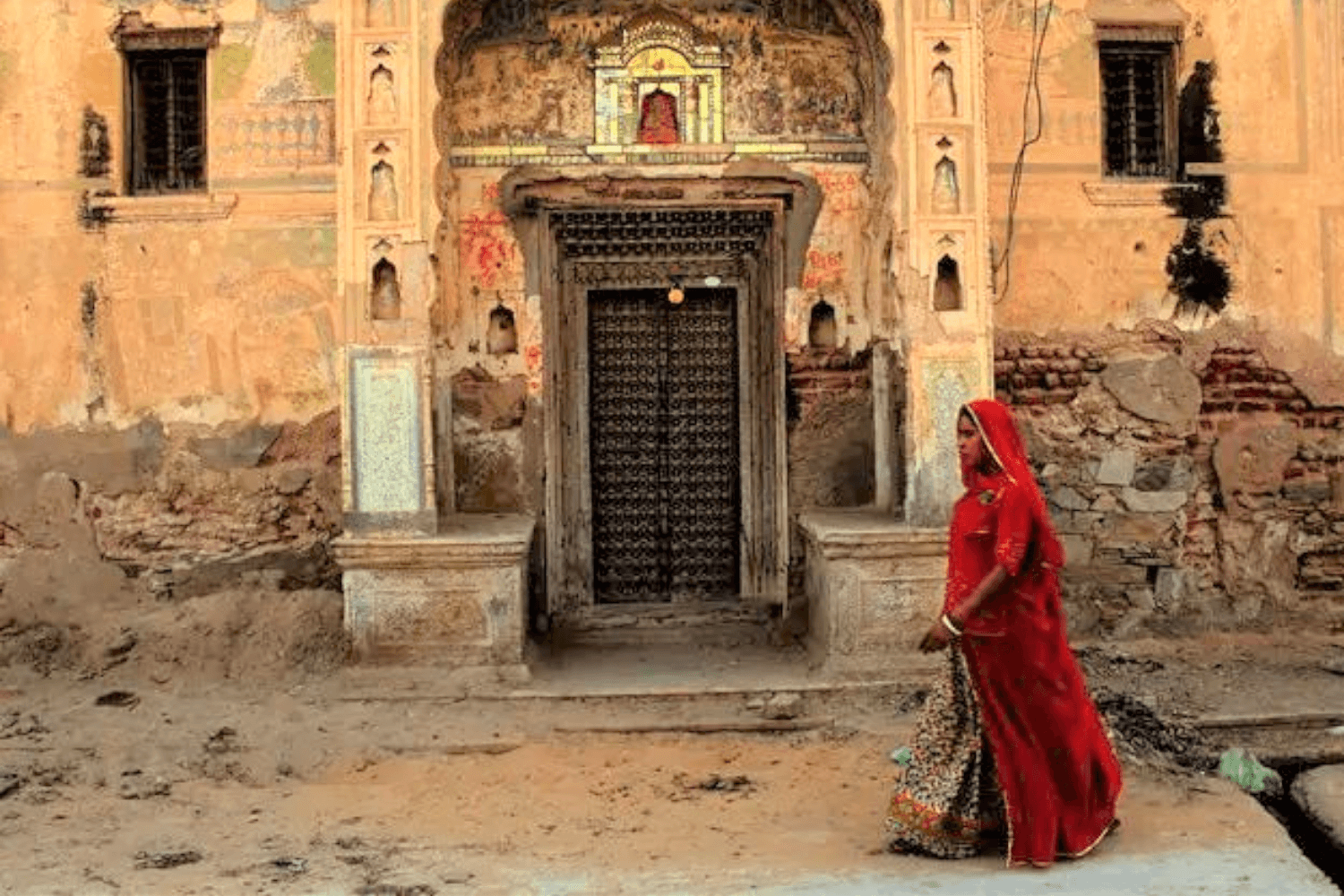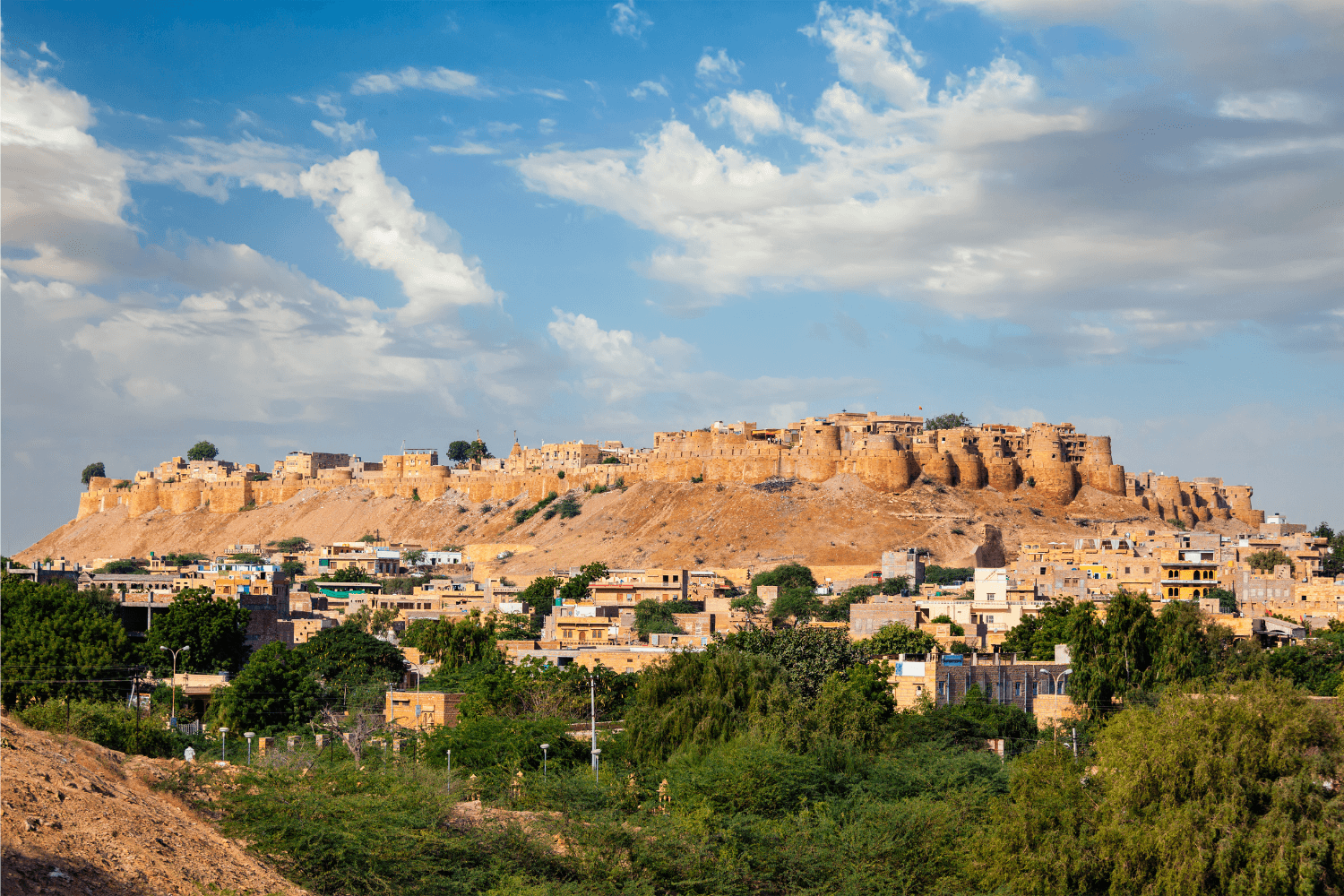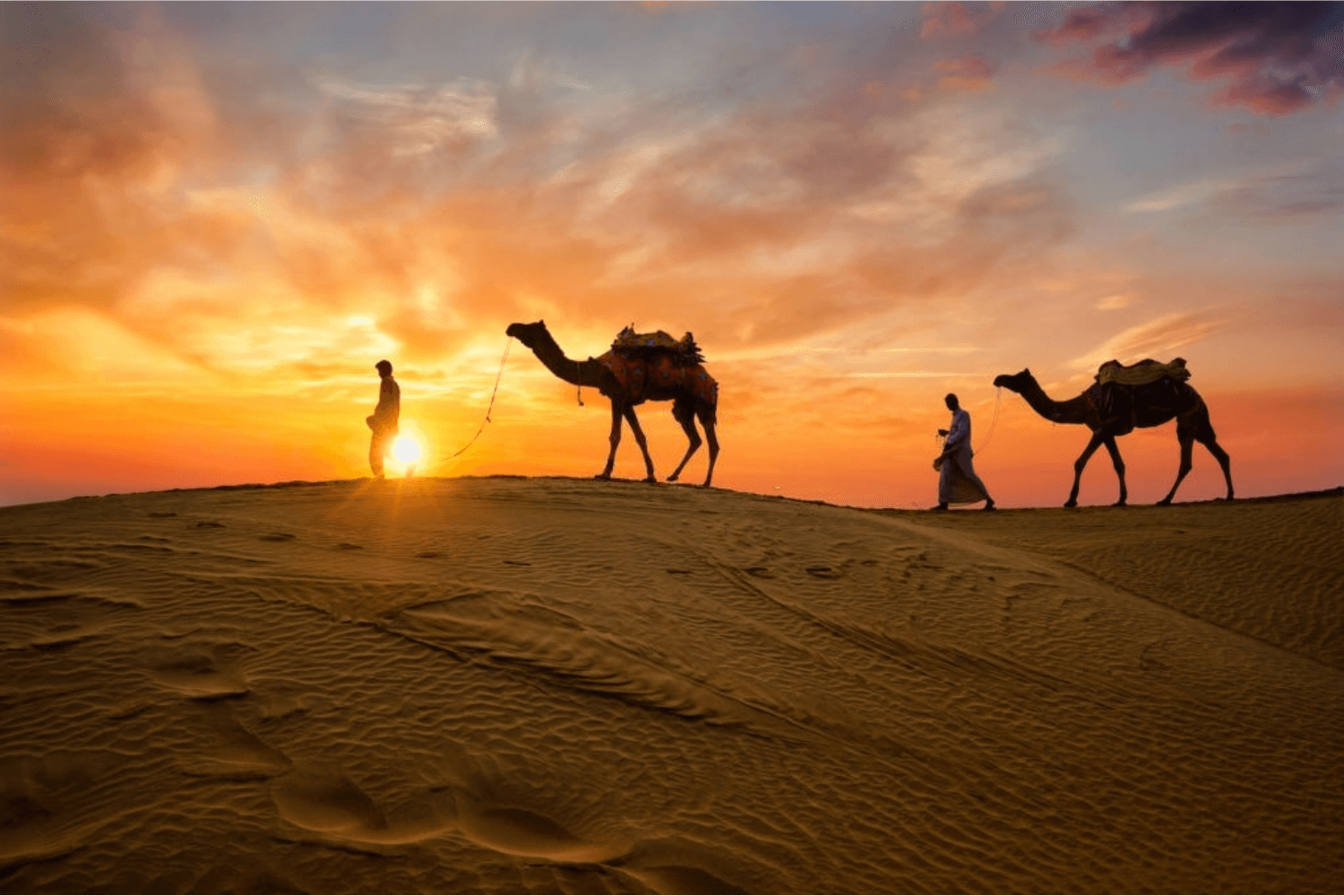Overview
The desert habitats of Rajasthan may seem like the last place one would find a variety of natural life. However, these unique habitats are home to some of the Indian subcontinent’s most sought-after birds and mammals, from Great Indian Bustard and Indian Spotted Creeper to Blackbuck, Desert Fox, Desert Cat, and more.
Your tour starts in Delhi, a center of civilization for millennia, and now the capital of India. Apart from many historical monuments and heritage buildings, there are also many birding destinations close to the capital region.
From Delhi, we will travel to Tal Chhapar. Once the hunting ground of the Maharaja of Bikaner, this small protected area has a large population of Blackbuck and Chinkara, and a very impressive list of birds, including raptors, owls, shrikes, larks, Yellow-eyed Pigeon, Indian Spotted Creeper, and more.
After visiting Tal Chhapar, you will be visiting Bikaner and the Jorbeer Vulture Conservation Reserve, where you can have the opportunity to watch flocks of Himalayan, Griffon, and Egyptian Vultures. Steppe Eagles and other raptors are also commonly found in Jorbeer.
A much more pleasant environment can be found in Kheechan. This Rajasthani village is famous for the several-thousand strong flock of Demoiselle Cranes, which stop here on their migration route. For years, it has been a local tradition to keep grains out for the birds, and this spot has now become an important fueling stop for the cranes. Afterward, we will drive to the fortified city of Jaisalmer, our base for the next three nights, arriving quite late as we will find it difficult to leave the crane spectacle.
West of Jaisalmer, close to the Indo-Pakistan border, lies the Desert National Park, our final destination on this tour. Desert National Park is one of India’s largest national parks, covering an area of 3,162 sq km of the Thar Desert, with habitats like sand dunes, rock patches, scrub patches, and small water bodies.
The park is of special interest to birdwatchers, as there is an abundance of birdlife. The region is a haven for migratory and resident birds of arid habitats. Many raptors are spotted here, including Short-toed Snake Eagle, Tawny Eagle, Greater and Indian Spotted Eagles, and various falcons, and sandgrouses at the water bodies. The star bird species here is the Great Indian Bustard, which migrates locally in different seasons. The park is one of the last remaining strongholds of the Great Indian Bustard, now sadly reduced to a population of fewer than 200 birds and with a real risk of extinction during our lifetimes.
Finding life in the desert
After planning this trip for many years, and it is canceled for a myriad of reasons, I finally had the chance to do some birding in Rajasthan, mainly in the desert habitats. Non-birders reading this may wonder why I’m ignoring all the beautiful forests India is home to, and why these seemingly lifeless places are such a Mecca for me. The answer is simple - these places are far from lifeless. Whether it is the colorful local life and beautiful traditional textiles, or the myriad of birds and animals one can find here, much of it uniquely adapted to the harsh conditions, these places are special indeed!
The first place I visited was Tal Chhapar, from where I entered the desert, so to speak. While not completely barren, the habitat here is clearly of the drier variety. My main target here was the Indian Spotted Creeper. Most non-birders may see a photo of this bird in a book and think “Why is this so special? It’s not even colorful or graceful?” Well, the unique habit of this bird, to scale up and down tree trunks like a woodpecker in search of food is something I find fascinating. Couple that with its amazing camouflage (thanks to that “boring” plumage), and the challenge makes the search even more fun! Needless to say, with the help of the accompanying guide, finding this bird was not a difficult task at all, although I won’t say it was easy.
I also got amazing photos of herds of Blackbuck, a graceful antelope I had last seen in Velavadar in Gujarat. Not to mention my other lifer here - Yellow-eyed Pigeon. A lot of amateur birders may confuse this bird with the feral pigeons we see everywhere and again, this is something that only a birder will find special!
From Tal Chhapar, I moved on to Bikaner. The foodie in me knows Bikaner as the birthplace of many of my favorite snacks! However, I was here for a somewhat much less appetizing experience. My interest here was birding near Bikaner, namely the Jorbeer Vulture Conservation Reserve. This place is a livestock carcass dumping ground that attracts scores of multiple vulture species as well as other scavengers. Only a truly dedicated birder would visit here, or at least one who is desperate to see vultures. In the 1990s, the use of the veterinary drug Diclofenac caused the vulture population in India to drop by 99%, what experts call the “Asian Vulture Crisis”. I still listen fascinatedly to the stories of some of my older birding friends who tell of days when you could see flocks of vultures in the cities. Now you know why these birds are so sought-after by birders and the importance of places like Jorbeer.
After looking at what some (definitely not me) may call ugly birds in Bikaner, my next stop was Kheechan, to see a congregation of birds no one in their right mind would call anything less than elegant.
For years, locals in the village of Kheechan have put out grain for the Demoiselle Cranes that stop here during their migration. Kheechan has now become an important fueling stop for these amazing birds, who gather in the thousands, and a delight for birdwatchers who flock here (although in fewer numbers than the cranes).
After this amazing spectacle, I moved to the main stop on my tour: Desert National Park. Whoever thinks deserts are only hot has clearly not visited one in winter, and never done any birding at Desert National Park. The biting cold almost made me question my resolve a few times, but the promise of bustards was too great! Needless to say, my guide was simply amazing and got me great sightings of not only Great Indian Bustard, but also Macqueen’s Bustard, Black-bellied Sandgrouse, Black-crowned Sparrow-Lark, Desert Lark, several wheatears, and many more lifers!! Needless to say, a piping hot fresh meal at a local Dhaba was the least I could do for him!
What made this entire trip even more special was the colorful people here. Even in this harsh region, people are so welcoming, and their traditions and culture so colorful, it truly lifts the spirits. Several obligatory (but welcome) cups of chai in local houses, and a few games of cricket with the kids were the icing on the cake of my trip.
Please Note, the Acronyms in Bird Species
R stands for Resident Birds
S stands for Summer
W stands for Winter

Meals: Dinner
Accommodation: Forest Rest House
Arrive at Delhi. You will be met by an Asian Adventures representative and driven to Tal Chhapar Sanctuary (370km / 07 hrs.), from where we enter the desert habitats and concentrate on some of the birding specialties of this tour.
Overnight stay.
Key species: Indian Spotted Creeper(R), Yellow-eyed Pigeon(R), Great Grey Shrike(R), Long-tailed Shrike(R), Desert Wheatear(R)

Meals: Breakfast
Accommodation: Forest Rest House
We have the full day to explore the grassland sanctuary of Tal Chhapar. The walking and motorable trails in Tal Chhapar will yield an amazing diversity of arid-area birds.
Overnight stay.
Key species: Red-necked Falcon(R), Greater Spotted Eagle(W), Pallid Harrier(W), Montagu’s Harrier(W), Western Marsh Harrier(R)

Meals: Breakfast and Dinner
Accommodation: Lal Garh Palace
We have another half day of birding in Tal Chhapar to look for targets. Once the hunting ground of the Maharaja of Bikaner, this small protected area has a large population of Blackbuck and Chinkara and a very impressive list of birds. After half a day of birding, we will drive to the city of Bikaner. After some vulture spotting and Jorbeer birding, we will be spending the night in Bikaner.
Key species: Cinereous Vulture(W+S), Griffon Vulture(W), Indian Vulture(R), Egyptian Vulture(R), Red-headed Vulture(W), Indian Eagle-Owl(R), Montague’s and Pallid Harriers(W), White-eyed Buzzard(R), Laggar Falcon(R), Yellow-eyed Pigeon(R), Indian Spotted Creeper(R), Long-tailed and Great Grey Shrikes(R), huge mixed flocks of Greater Short-toed and Bimaculated Larks(W), and Water and Buff-bellied Pipits(W)

Meals: Breakfast in Kheechan and Dinner in Camp
Accommodation: Paddav Luxury Camp
From Bikaner, we will move to the village of Kheechan. After a morning session of birdwatching and photography in Kheechan, famous for its large flocks of Demoiselle Crane, we move on to the city of Jaisalmer, and Desert National Park, where we will have a full day of birdwatching in the Thar Desert. The region is a haven for migratory and resident birds of the desert. Many eagles, harriers, falcons, and vultures are spotted here, as well as the highly endangered Great Indian Bustard.
Key species: Demoiselle Crane(W), Indian Peafowl(R), Great Indian Bustard(R), Steppe Eagle(W), Saker Falcon(R), Peregrine Falcon(W), Trumpeter Finch(W+S)

Meals: Breakfast, Lunch, and Dinner
Accommodation: Paddav Luxury Camp
We have a full day of birding today to explore the very unique Desert National Park. This is one of the last remaining strongholds of the Great Indian Bustard, now sadly reduced to a population of fewer than 200 birds and with a real risk of extinction during our lifetimes.
Overnight stay
Key species: Great Indian Bustard(R), Macqueen’s Bustard(W), Black-crowned Sparrow-Lark(R), Desert Lark(R), Black-bellied Sandgrouse(W), Desert Wheatear(R)

Meals: Breakfast, Lunch, and Dinner
Accommodation: Paddav Luxury Camp
We have another full day of Desert National Park birding today to look for more targets. Aside from the bustard, there are several specialties to find here, including many raptors, Spotted and Black-bellied Sandgrouse(W), Cream-coloured Courser(R), Black-crowned Sparrow-Lark(R), Desert Lark(R), Greater Hoopoe-Lark(R), the little-known White-browed Bush Chat(R), Red-tailed Wheatear(W), Plain Leaf Warbler(W), and Trumpeter Finch(W).
Overnight stay.

Meals: Breakfast
Accommodation: None
After a morning session birding in the Desert National Park, we drive east to Jodhpur (325km/5.5hrs) for your connecting flight back to Delhi.
Key species: Macqueen’s Bustard(W), Desert Lark(R), Red-tailed Wheatear(W), Spotted Sandgrouse(W), Trumpeter Finch(W)
Highlights
- Rich and unique desert flora and fauna
- Spectacular Birdwatching with some of India’s most sought-after birds
- A glimpse into daily rural life in the desert
- Great opportunities for photography
- Delicious local Rajasthani cuisine
- Stay in some of the region’s top ecolodges
Included
- Accommodation on twin / single sharing basis Meals as per the itinerary
- Birdwatching in Tal Chapper, Bikaner, Kheechan and DNP Permits of DNP
- Local jeep hire in DNP (04 persons per jeep basis) Dedicated transport
- Arrival and departure transfers in Delhi All taxes
Video
Location
Stories
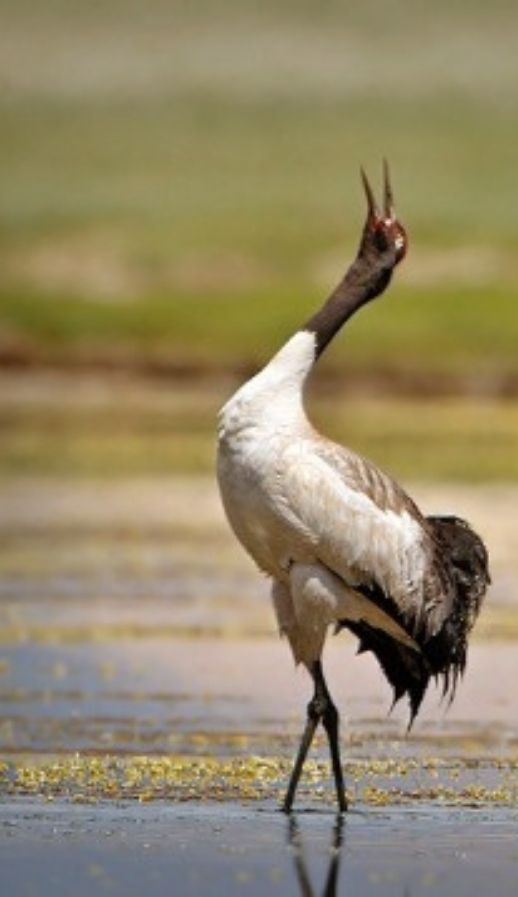
Ladakh
North India, the land of Ladakh, looks as though it was made for birdwatching and photography.

Gir National Park Gujarat
Sometimes it is not just the species spotted but also the amazing moments. Some of our guests had the unique opportunity to witness the mating of Asiatic Lions in the Gir Forest, truly a special moment.

Delhi
Surajpur is an amazing wetland close to the nation’s capital. Apart from being one of the monsoon homes for the Bristled Grassbird, it is also home to another sought-after species: the Bengal Bush Lark.

Rajasthan
One advantage of living near the birding hotspot of Bharatpur is that you can see some amazing birds, like the graceful Sarus Crane, in your backyard during this lockdown


